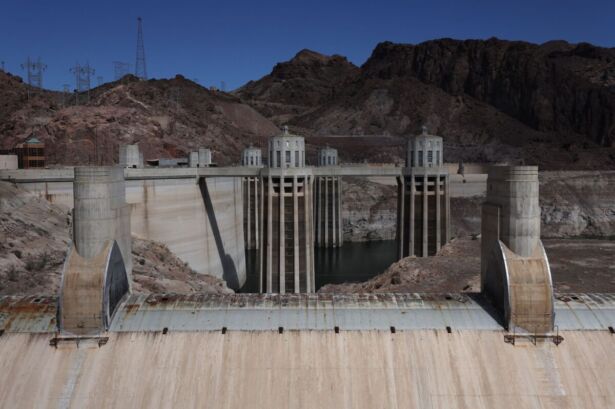The Biden administration has proposed a federal mandate to reduce the supply of water to 40 million Americans who live in western states dependent on the Colorado River Basin to address long-term severe drought and low run-off conditions.
The actions were part of a draft report by the Department of the Interior’s (DOI’s) Bureau of Reclamation.
The draft Supplemental Environmental Impact Statement proposes to revise the current guidelines for the near-term operation of Glen Canyon and Hoover Dams.
According to the DOI, the move forms part of the Biden administration’s efforts to invest in climate change resilience for the Colorado River Basin and all the communities that rely on it.
The draft report explores different alternatives to ensure continued water deliveries and hydropower production for the 40 million Americans who depend on the river system.
Two man-made reservoirs along the Utah–Arizona border, Lake Powell and Lake Mead, have dropped to dangerously low levels, nearing the so-called dead pool levels, which threaten water supplies and the hydropower-generated electricity for tens of millions of Americans.

DOI Deputy Secretary Tommy Beaudreau has said failure to act is not an option.
“Recognizing the severity of the worsening drought, the Biden-Harris administration is bringing every tool and every resource to bear through the President’s Investing in America agenda to protect the stability and sustainability of the Colorado River System now and into the future,” Beaudreau said in a statement.
Bureau of Reclamation Commissioner Camille Calimlim Touton said drought conditions in the Colorado River Basin have worsened over two decades.
“To meet this moment, we must continue to work together, through a commitment to protecting the river, leading with science and a shared understanding that unprecedented conditions require new solutions,” Touton said in the same statement.
Proposed Action Alternatives
The draft report proposes two ways to change how the dams are operated. Both involve using less water from the Glen Canyon Dam and dealing with additional water shortages. The main difference between the two proposals is how the shortages are shared out.
The first option, referred to as “Action Alternative 1,” modeled the shortages based on who has the highest priority water rights. The second option, referred to as “Alternative 2,” modeled the shortages being shared out equally among all water users in the Lower Basin.
Both proposals predict that there will be more and more water shortages as the water levels in Lake Mead get lower and there will be bigger shortages in 2025 and 2026 than in 2024.
But the total amount of water shortages in 2024 is limited to 2.083 million-acre-feet because this was the maximum amount analyzed in the 2007 Interim Guidelines’ final environmental impact statement.

The DOI’s first proposed action would benefit the agriculture industry in California but would disproportionately negatively impact junior water rights holders like an Arizona entity that supplies water to Phoenix.
The DOI’s second proposed action would result in even water supply reductions across the Lower Basin states regardless of seniority.
Both actions would entail progressively deeper supply reductions based on how much Lake Mead’s level declines.
According to the DOI, the alternatives analyzed in the draft report address potential shortages in the event that such measures are required to protect Glen Canyon and Hoover Dam operations, system integrity, and public health and safety in 2024 through 2026, after which the current operating guidelines expire.
The draft report will be available for public comment for 45 days, and a final decision is expected to be made in the summer.
From The Epoch Times

